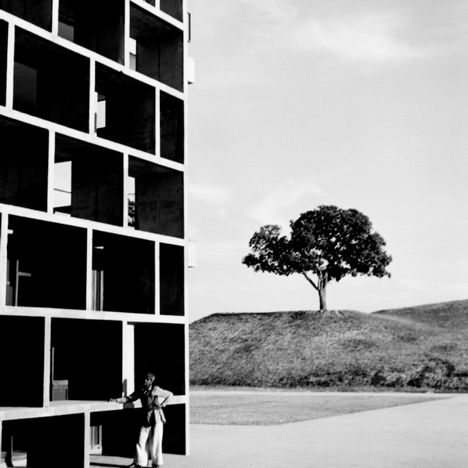
"Le Corbusier was incredibly attuned to the power of photography," says Barbican exhibition curator
Interview: a new exhibition at the Barbican in London explores how photographers have shaped public perceptions of architecture over the past century. Dezeen spoke to curator Elias Redstone about how greats including Le Corbusier, Aldo Rossi and Zaha Hadid have forged "symbiotic relationships" with photographers.
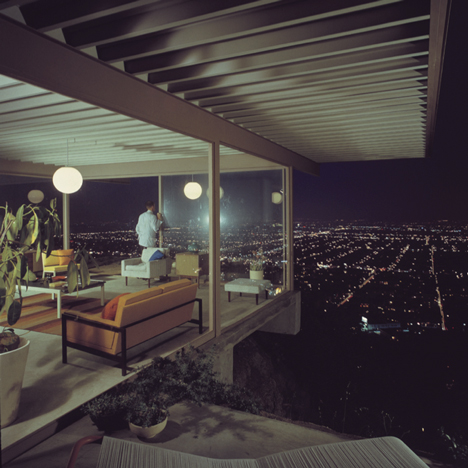
The exhibition, Constructing Worlds: Photography and Architecture in the Modern Age, explores how photographers such as Le Corbusier's long-time collaborator Lucien Hervé and Aldo Rossi's favourite Luigi Ghirri have helped shape the narrative of modern architecture, rather than merely documenting the work.
"The symbiotic relationship between photographers and architects at the time had a lot more meaning than just the photographers being used for marketing," said Redstone.
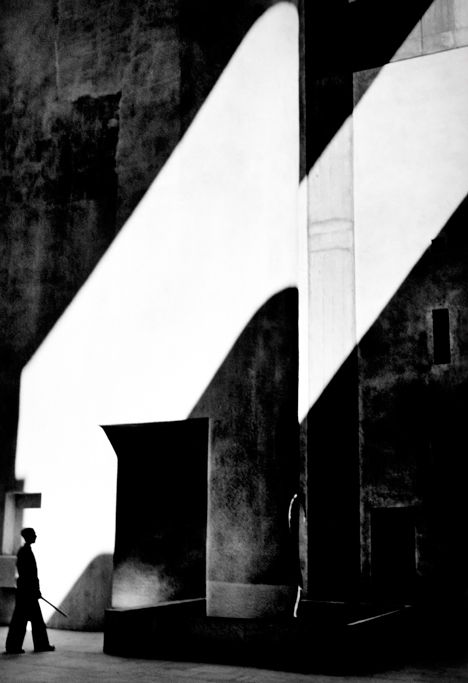
"What we tried to stress in the exhibition was the relations between architects and photographers that have influenced both the way the architecture is disseminated but also the way that the architects view their work, and therefore consider their work."
Le Corbusier, for example, felt that Hervé "had the soul of an architect" and worked closely with him for over two decades. "In the same way the relationship between Luigi Ghirri and Aldo Rossi is incredibly beautiful," said Redstone, who added that it was "unavoidable" that the work of Zaha Hadid is not in some way influenced by the photography of Hélène Binet.
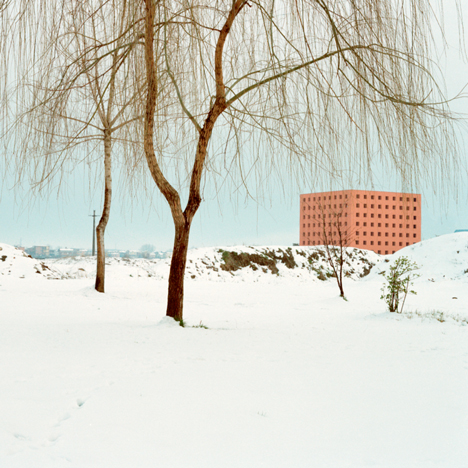
Constructing Worlds features works by 18 of the leading architectural photographers of the 20th and 21st centuries including Hervé, Ghirri and others including Julius Schulman, Walker Evans, Berenice Abbott, Bas Princen, Ed Ruscha and Hélène Binet.
Redstone said that the work of key artists featured in the exhibition had helped turn Modernist architecture into a lifestyle that could be communicated to a wider audience, setting a precedent that turned photography into one of architecture's most powerful marketing tools.
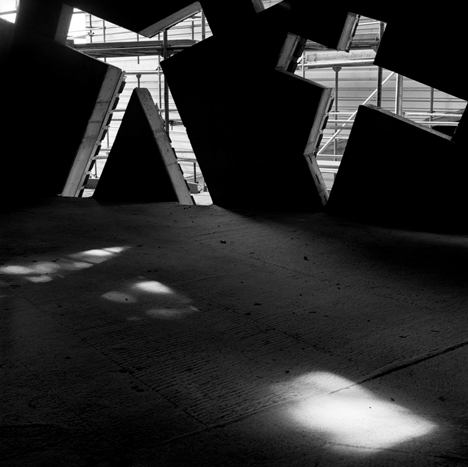
Redstone said the exhibition offered an opportunity to take a "step back" from the fast-paced consumption of imagery online and offer a more considered look at the relationship between architecture and the photographic image.
The exhibition features works dating from the 1930s through to contemporary projects, including a series of images from the 1960s and 1970s that capture scenes of every day, vernacular architecture, rather than individual buildings by well-known architects.
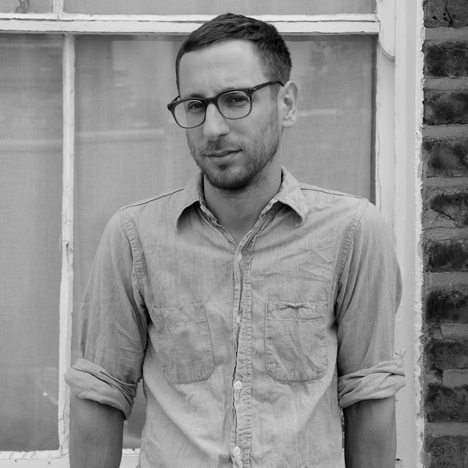
Read our interview with curator Elias Redstone:
Matthew La Croix: How did you get involved with curating Constructing Worlds and how did the exhibition come about?
Elias Redstone: The Barbican approached me when I was researching the book Shooting Space: Architecture in Contemporary Photography to talk to them about this area of study. They were interested in an exhibition that explored the relationship between architecture and photography, and we developed the idea of exploring these two disciplines through the modern age. I was invited as a guest curator and have been collaborating with Alona Pardo, associate curator at the Barbican, in delivering the exhibition over the last year.
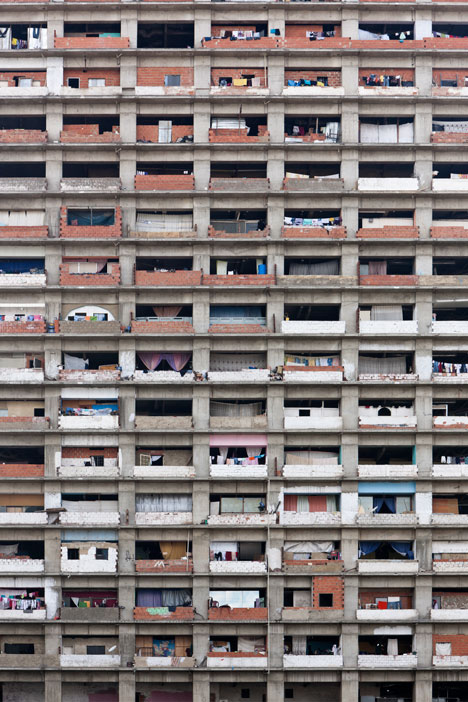
Matthew La Croix: The Barbican have done major shows of photography and major shows of architecture in the past. Why do an exhibition on the relationship between the two now?
Elias Redstone: Today we're overwhelmed by the proliferation of imagery, architectural and otherwise. We're bombarded by beautiful photos of buildings everyday, and for me it was important to step back and look at a more critical relationship between the two disciplines to remember the role photography has played in the communication dissemination of architecture. But beyond that, how artists are responding to architecture in their photographic practice to say something more about how we live today. So for everyone in this exhibition architecture is just a protagonist with which to look at the world.
We were keen to collapse the categories and boundaries between architecture, fine art, and documentary photography. Just to look at how photography can be used as a medium, not to just look at the intentions of architects but their lived experience and lived reality, and at the same time also explore the symbolic value of architecture in the photographic medium.
Matthew La Croix: Is there a favourite that you have in the show?
Elias Redstone: Some of the work from the 1960s and 1970s is particularly interesting, when artists started exploring vernacular architecture in photography and started responding to the everyday – banal buildings, industrial sites, street-scapes, suburbia – and turned these into sites of architectural interest, like Ed Ruscha, Bernd and Hilla Becher, or Stephen Shore. What has been incredible about the process of the exhibition has been the enthusiasm of all the photographers, and their galleries, and their estates, in being part of the show. We very early on met with Stephen Shore in London and explained the show and he unreservedly jumped at the chance to be part of this and provided us with access to previously unseen work to be included in the exhibition.
He's been exploring the architectural and built environment in his work for several decades, and getting his backing, not just on addressing the topic of photography and architecture, but our curatorial approach, was reassuring and really encouraged us to create this exhibition. We're particularly indebted to Hilla Becher who responded to the invitation to participate in the exhibition by making a new print display of 21 water towers that responds precisely to the form and dimensions of the gallery at The Barbican.
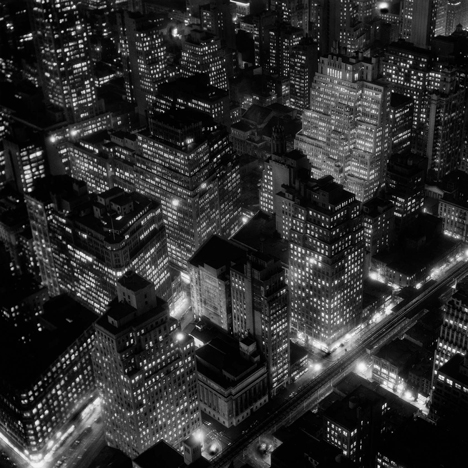
Matthew La Croix: You said photography has changed the way we think about architecture and indeed the way architects work – could you elaborate on that a bit?
Elias Redstone: What we tried to stress in the exhibition was a few of the relations between architects and photographers that have influenced both the way the architecture is disseminated but also the way that the architects view their work, and therefore consider their work.
So for example the relationship between Le Corbusier and Lucien Hervé. When Le Corbusier had first seen Lucien Hervé's first photographs of his buildings, the first one he had shot on a commission was for the Unite d'Habitation in Marsaille. Hervé sent Le Corbusier the photos, Le Corbusier wrote to him and told him he had the soul of an architect and worked with the photographer until he died almost two decades later. And the way Lucien Hervé worked was not, what you see today very often, the singular image, he worked in whole suites of images.

He was a self-trained photographer and he would try and caption the experience of, not just the building, but moving through the building. He communicated with Le Corbusier on a series of contact sheets that he made himself and he would crop the photos by hand – he would crop them, annotate them, pick two of these sheets, one he kept and one he sent to Le Corbusier.
When you look at these sheets they're almost like cinematic stills, they're almost like computer renderings of flying through the space. And Le Corbusier, who was incredibly attuned to the power of photography – he was interested in photography and was an amateur photographer himself – responded very much and used these images to communicate his work and to understand his work.
In the same way the relationship between Luigi Ghirri and Aldo Rossi is incredibly beautiful. Again it started with a commission – Luigi Ghirri was commissioned by Lotus International magazine to photograph the cemetery that Rossi had designed. Ghirri was incredibly interested in colour photography at a time in Europe when black and white was very dominant, and used photography as a way to understand the landscape and environments that he was living within.

When he photographed the Aldo Rossi building he saw lots of tendencies and influences in his work that aligned with his thinking; he was very interested in geometry, basic geometric shapes that Aldo Rossi was working with and playing with in his architecture which as a photographer he was able to respond to. He used the same views of or framing buildings through the thresholds of openings in such a dramatic way, so much so that Aldo Rossi says Luigi Ghirrir changed the way that he sees his own architecture.
So the symbiotic relationship between photographers and architects at the time had a lot more meaning than just the photographers being used for marketing.
Matthew La Croix: Hélène Binet's images have an element of theatricality. Do you think architects like Zaha Hadid think about the presentation of their architecture as they design them?
Elias Redstone: Well I think the success of Julius Schulman and Lucien Hervé, and the way that these photographers have disseminated the work of modern architecture around the world and have sold not just a built form but the lifestyle of modernism in a photographic image, has meant that today architects are intrinsically aware of the power of photography to spread ideas, to spread a vision of how the world can be, and it's unavoidable.

Hélène Binet in particular is very aware of the intrinsic problem of translating a three-dimensional experience into a two dimensional image. You'll see in her work that she doesn't necessarily try to just document a building but tries to represent it through her interpretation of it in a two-dimensional image. She uses very much the play of light and shadow and texture, and obviously admires the work of certain architects who she finds herself aligned to.
She is very frequently photographing the work of Zaha Hadid, Peter Zumthor and others. The photographs of the Jewish Museum by Libeskind that are in the exhibition are incredibly poignant because the building was under construction, which is a time that Hélène likes to photograph architecture, both before and after it's completed.
She had to climb over the fence, trespass the building that is marked by this Fascist history and the trauma of this experience of the 20th Century and beyond, and capture it in this rawness and in this raw state, both in the materials and the building stage. These are quite haunting images with the light piercing through the building, and they feel almost like a dream space. It's about considering the experience of space and the symbolic value of architecture.